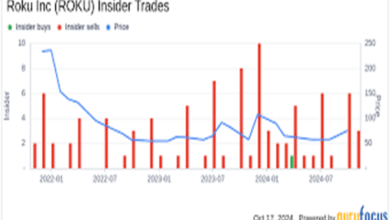What is FINNIFTY : A Comprehensive Guide to India’s Financial Index

FINNIFTY, also known as the Nifty Financial Services Index, is one of India’s essential stock indices. Created by the National Stock Exchange (NSE) of India, FINNIFTY represents the performance of companies in the financial services sector, including banks, insurance companies, and non-banking financial companies (NBFCs). FINNIFTY plays a crucial role for investors looking to gain exposure to the financial sector, allowing them to track the sector’s performance and make strategic investment decisions.
By analyzing FINNIFTY, investors can gauge the health of India’s financial sector, which is critical as it contributes significantly to the economy. The index comprises the top-performing financial companies listed on the NSE. This overview will provide a foundation for understanding the importance and structure of FINNIFTY in India’s stock market.
The Composition of FINNIFTY
The composition of FINNIFTY is designed to capture the performance of leading financial companies. FINNIFTY includes companies from different segments of the financial sector, such as banks, insurance providers, NBFCs, and other financial service providers. Each company included in FINNIFTY is chosen based on factors like market capitalization, liquidity, and sector representation. The index is reviewed periodically to ensure it reflects the current state of the financial sector.
The diverse composition of FINNIFTY provides investors with a broad perspective on the financial landscape. The index’s components are selected to give a balanced view of the sector, allowing it to be a reliable indicator of sectoral performance. Investors can track FINNIFTY to observe how these companies perform individually and as a group, which helps in assessing the overall health of the financial services industry.
How FINNIFTY Impacts the Indian Stock Market
finnifty significantly impacts the Indian stock market as it represents a major sector—financial services—that drives the economy. The performance of FINNIFTY often influences other indices and stocks, especially those closely related to banking and financial services. When FINNIFTY experiences gains or losses, it reflects investor sentiment toward the sector, which may, in turn, affect the broader market.
For instance, if FINNIFTY performs well, it indicates confidence in the financial sector, possibly prompting increased investment in the stock market. Conversely, if the index shows a downward trend, it might suggest concerns over economic stability, impacting investor behavior. Thus, FINNIFTY is essential for market participants who want to monitor economic sentiment and make informed decisions.
Trading Strategies for FINNIFTY
FINNIFTY offers unique trading opportunities due to its composition and behavior. Since FINNIFTY includes major financial stocks, it provides a stable and reliable platform for both day traders and long-term investors. Some popular trading strategies for FINNIFTY include intraday trading, swing trading, and options trading, each of which capitalizes on market movements.
Intraday trading with FINNIFTY is a popular strategy, where traders aim to capitalize on short-term price movements. Swing trading, on the other hand, allows traders to benefit from price fluctuations over several days. Options trading on FINNIFTY is another strategy, providing opportunities to hedge positions or speculate based on anticipated movements. These strategies offer flexibility for different trading styles and help maximize potential returns.
Why FINNIFTY Options Are Popular Among Traders
FINNIFTY options have become increasingly popular due to their flexibility and the potential for high returns. Options provide a way to speculate on FINNIFTY’s price movement without actually owning the index. Traders can choose between call and put options based on their outlook for the index, and they can also hedge their portfolios against potential downturns in the financial sector.
One advantage of FINNIFTY options is the lower capital requirement compared to directly purchasing all component stocks. This makes it accessible to a wider range of investors. Additionally, options trading in FINNIFTY allows traders to manage risk better, as they can set predefined limits on potential losses. This popularity has made FINNIFTY options one of the preferred instruments in the Indian stock market.
The Importance of FINNIFTY for Portfolio Diversification
For investors, portfolio diversification is a crucial strategy, and FINNIFTY can play a vital role in this process. As an index composed of top financial services companies, FINNIFTY enables investors to gain exposure to multiple segments within the financial sector. Including FINNIFTY in a diversified portfolio can reduce risk, as the financial sector typically behaves differently from other sectors.
Adding FINNIFTY to an investment portfolio provides exposure to banking, insurance, and financial services without needing to invest in each company individually. This sector-focused diversification can offer a balance to other investments in sectors like technology, healthcare, or manufacturing. Investors who understand the behavior of FINNIFTY can use it as an effective tool for managing portfolio risk and achieving steady returns.
Analyzing the Performance Trends of FINNIFTY
The performance trends of FINNIFTY are essential indicators of economic health and investor sentiment toward the financial sector. By observing FINNIFTY’s trends, investors can predict market behavior and assess the financial sector’s potential. For example, during periods of economic growth, FINNIFTY typically performs well as the demand for financial services increases.
Analyzing past performance can also help in understanding how FINNIFTY reacts to economic events. For instance, during economic slowdowns, the index may see declines as companies within the sector face challenges. Understanding these trends allows investors to strategize their investments better and anticipate market movements.
Comparing FINNIFTY with Other Sectoral Indices
FINNIFTY is one of several sectoral indices in India, each representing a different sector of the economy. Comparing FINNIFTY with other indices like Nifty IT, Nifty Pharma, or Nifty Auto helps investors understand how each sector contributes to the stock market and economy. FINNIFTY’s performance often aligns with economic cycles, whereas other indices may behave differently based on industry-specific factors.
This comparison can help investors determine which sectors are performing well and decide on diversification strategies. For example, if FINNIFTY is outperforming other indices, investors might allocate more capital to financial services. On the other hand, if other sectors are performing better, diversifying into those might be beneficial. By comparing FINNIFTY with other indices, investors can gain insights into the market’s overall health and make informed decisions.
Factors Affecting the Performance of FINNIFTY
Several factors influence FINNIFTY’s performance, including economic conditions, government policies, and interest rates. Changes in the economy, such as GDP growth, inflation rates, and fiscal policies, have a direct impact on the financial sector, which is reflected in FINNIFTY. Additionally, regulatory policies, such as those governing banks and NBFCs, can significantly affect the index.
Interest rates set by the Reserve Bank of India (RBI) are another key factor. When interest rates rise, the cost of borrowing increases, impacting profitability for financial companies. Conversely, low interest rates encourage borrowing, which can positively affect financial services. Understanding these factors helps investors anticipate how FINNIFTY might perform under different economic scenarios.
Conclusion: Why Understanding FINNIFTY is Crucial for Investors
FINNIFTY is a critical index for investors interested in India’s financial sector. As it represents a broad spectrum of financial companies, understanding FINNIFTY provides valuable insights into the sector’s health and growth potential. It also allows investors to gain exposure to multiple facets of the financial industry without having to invest in individual stocks, making it a powerful tool for portfolio diversification.
By tracking FINNIFTY, investors can gauge the sector’s stability and make well-informed decisions. From daily traders to long-term investors, FINNIFTY offers various opportunities for maximizing returns. Whether used as an investment benchmark or as part of a trading strategy, FINNIFTY is an essential component of the Indian stock market.
FAQs
Q1: What is FINNIFTY?
A: FINNIFTY is the NSE’s financial services index, representing major financial sector companies like banks and NBFCs in India.
Q2: How can I invest in FINNIFTY?
A: You can invest in FINNIFTY through options trading, mutual funds that track the index, or derivatives in the stock market.
Q3: What factors affect FINNIFTY’s performance?
A: FINNIFTY’s performance is influenced by economic conditions, interest rates, government policies, and the financial sector’s profitability.
Q4: Why is FINNIFTY popular among traders?
A: FINNIFTY is popular due to its stability, sectoral representation, and the flexibility it offers for options and derivative trading.
Q5: Is FINNIFTY a good choice for diversification?
A: Yes, including FINNIFTY in a portfolio provides exposure to the financial sector, helping balance investments in other industry sectors.




